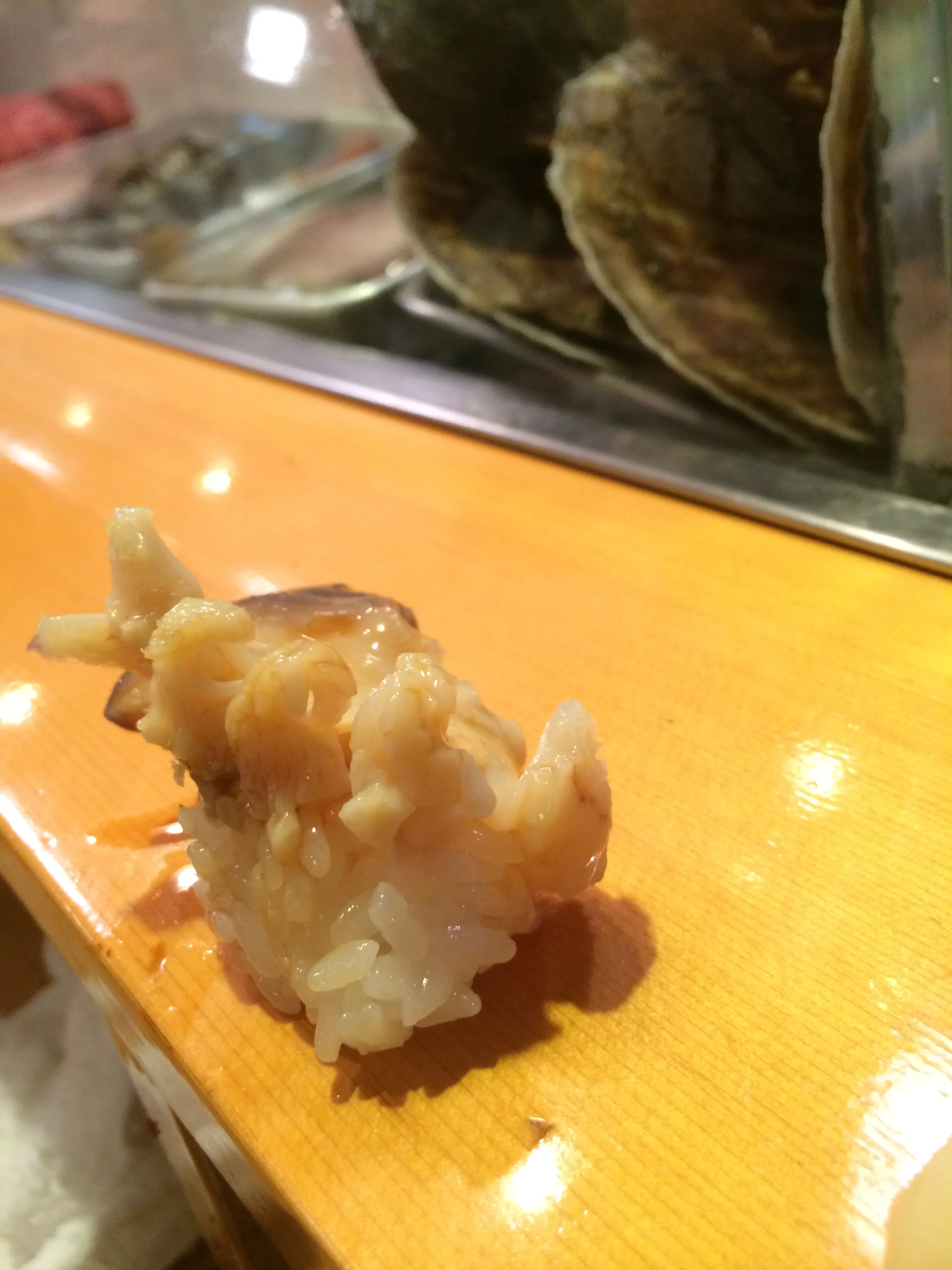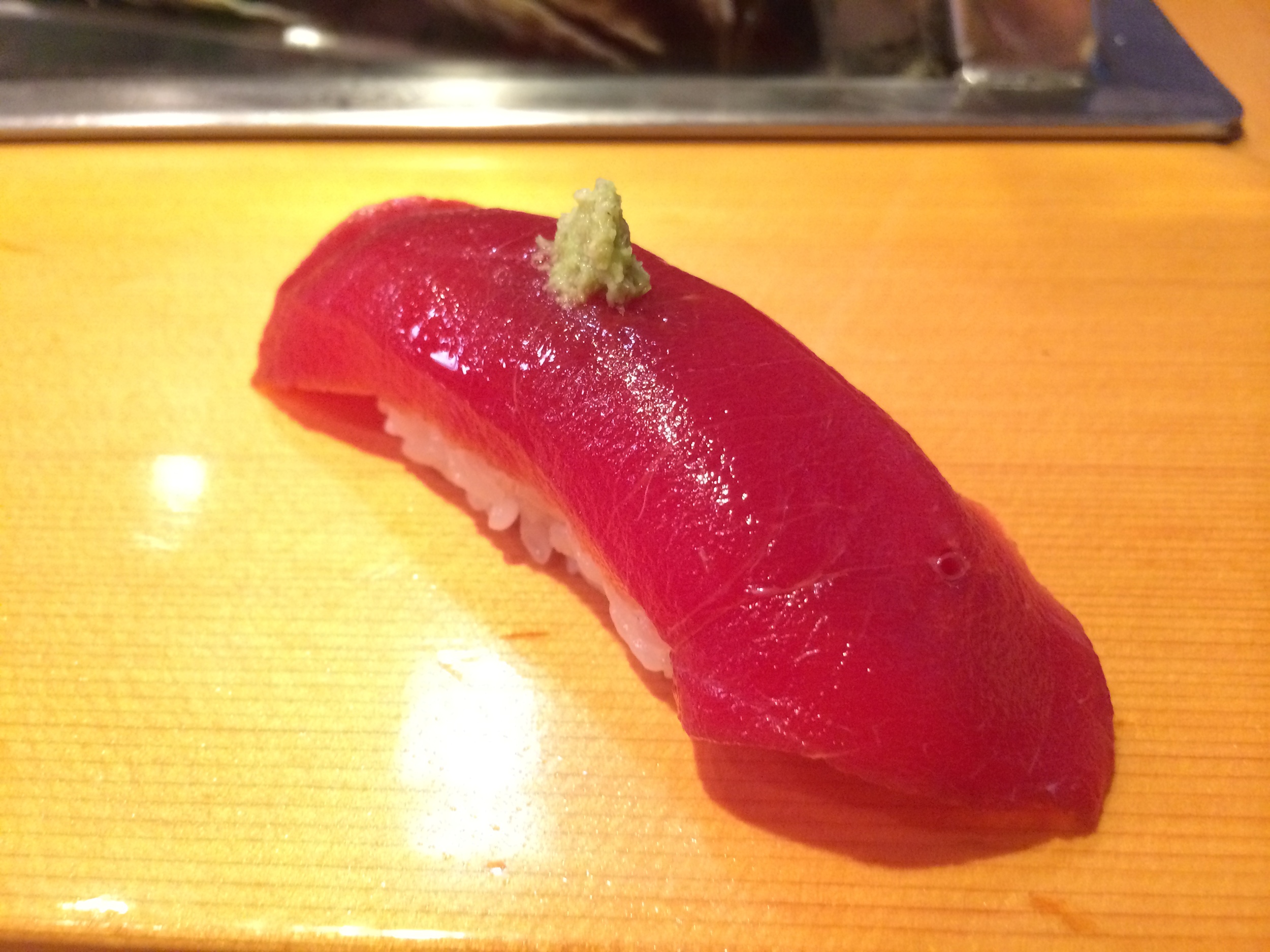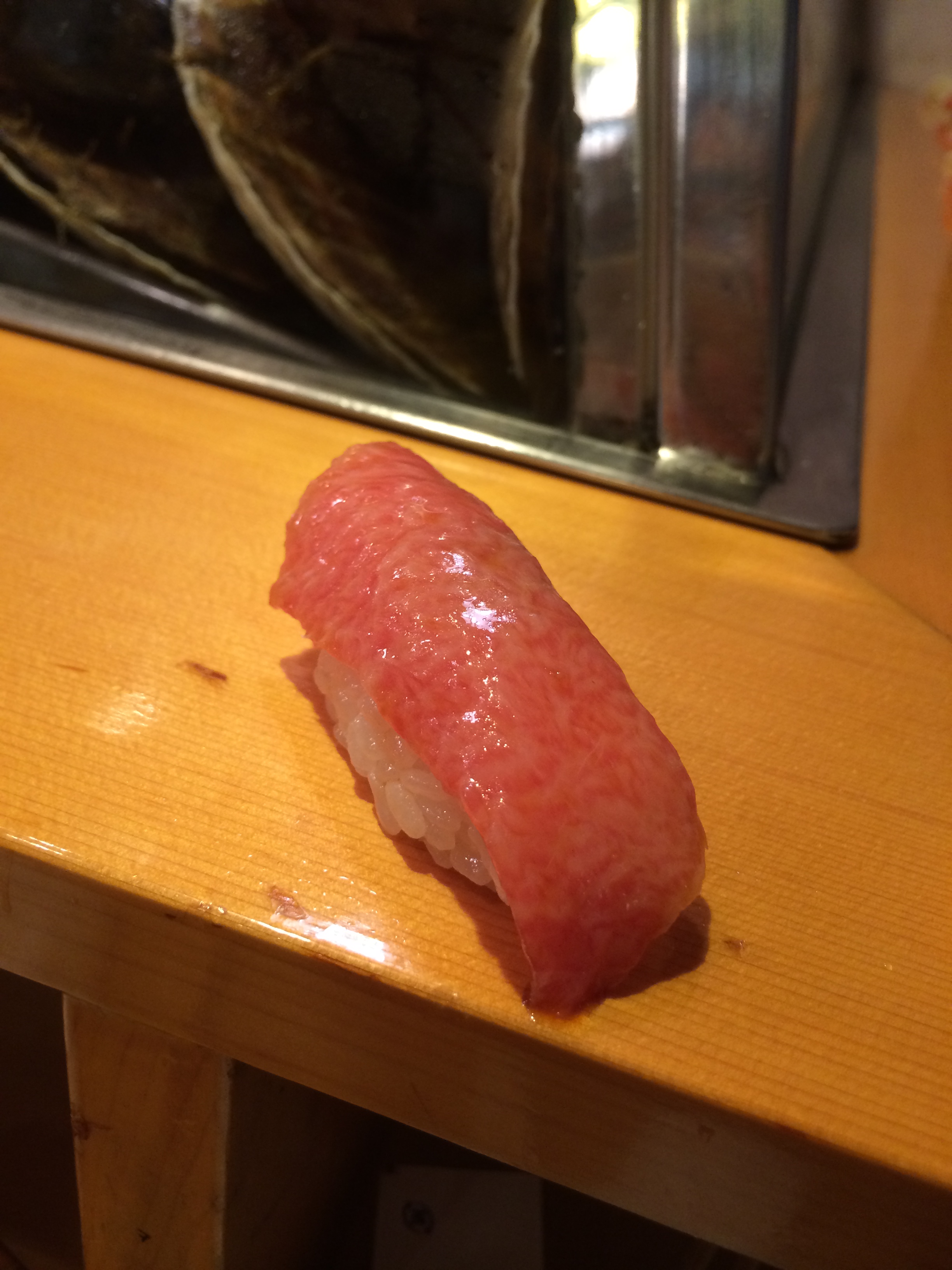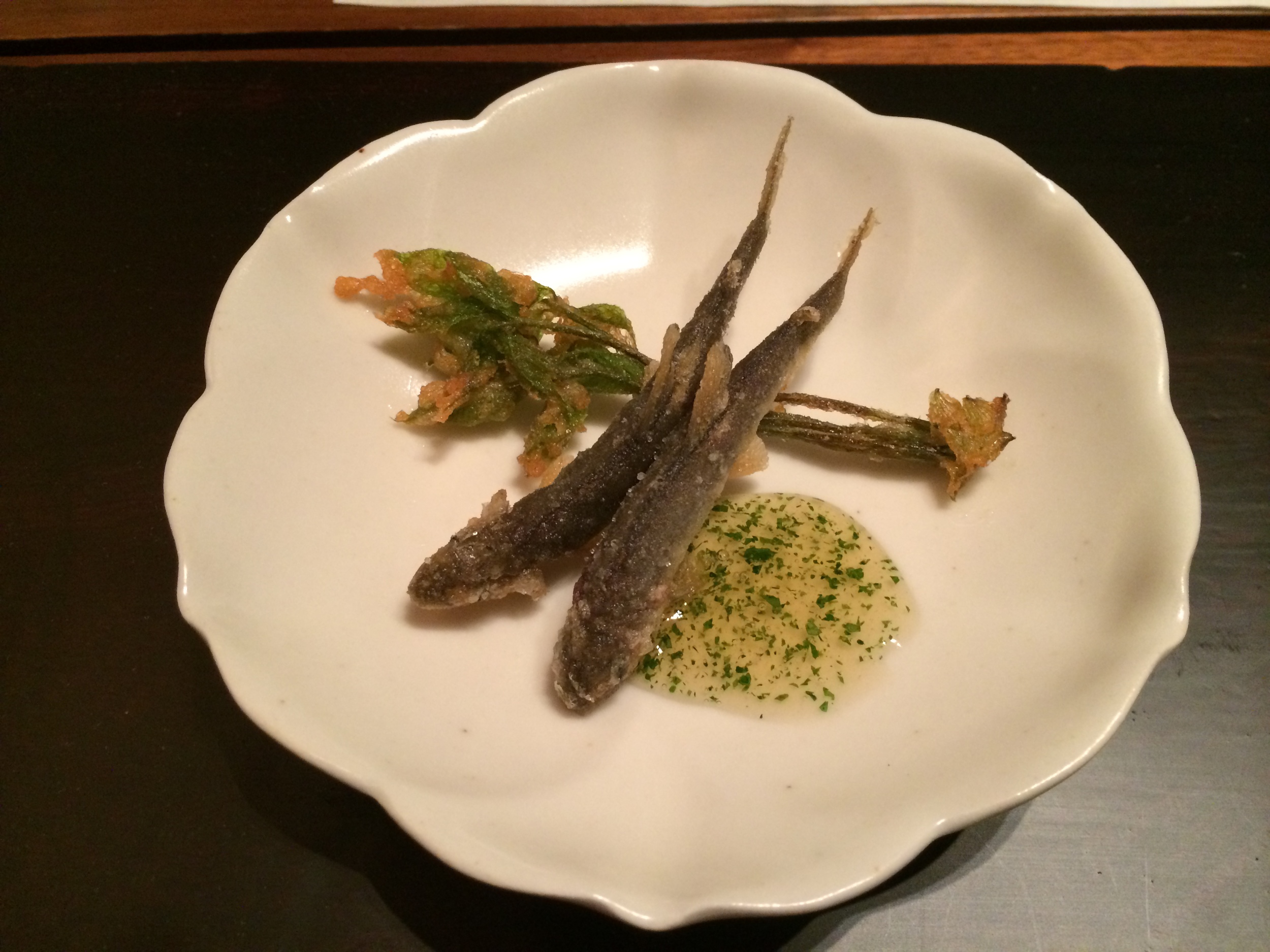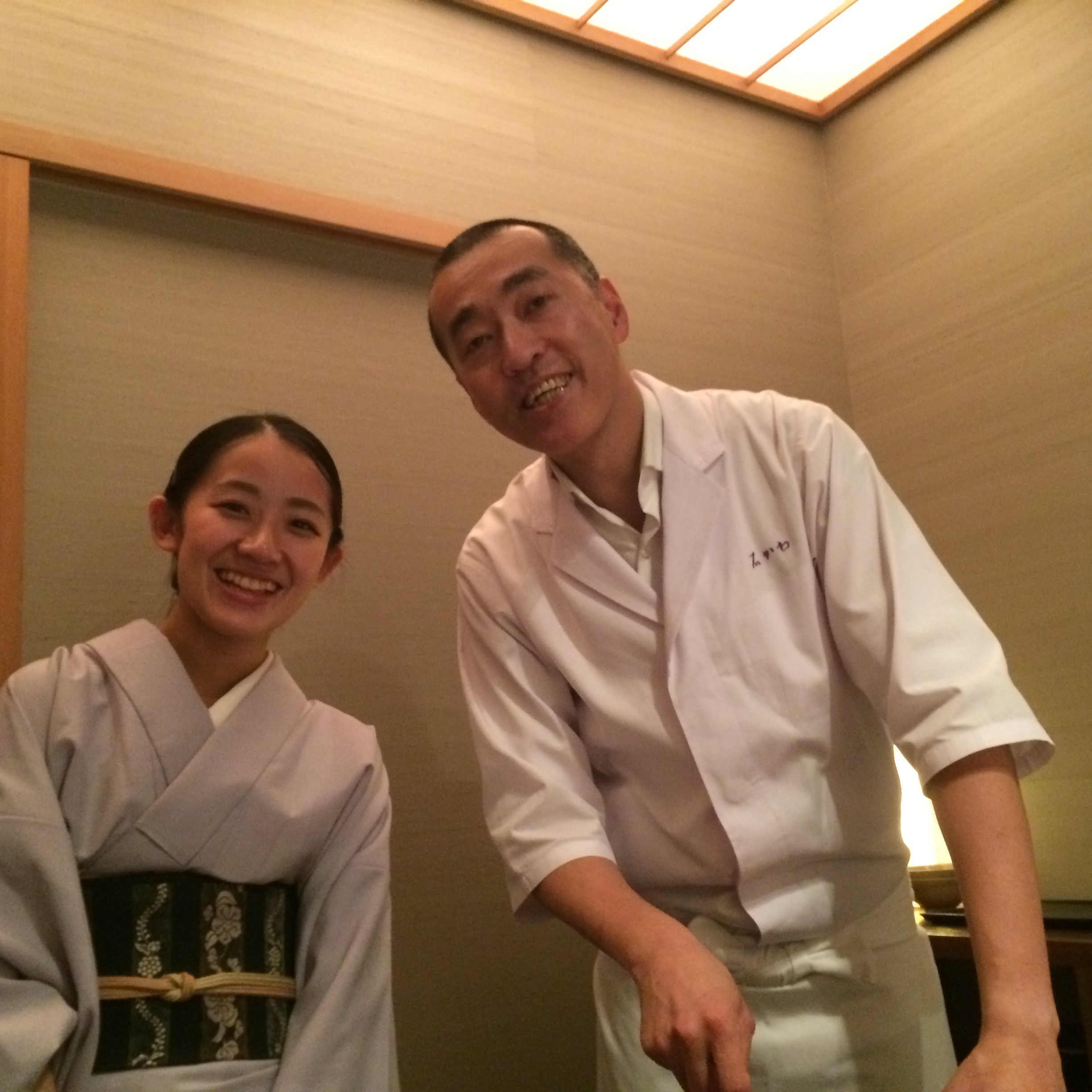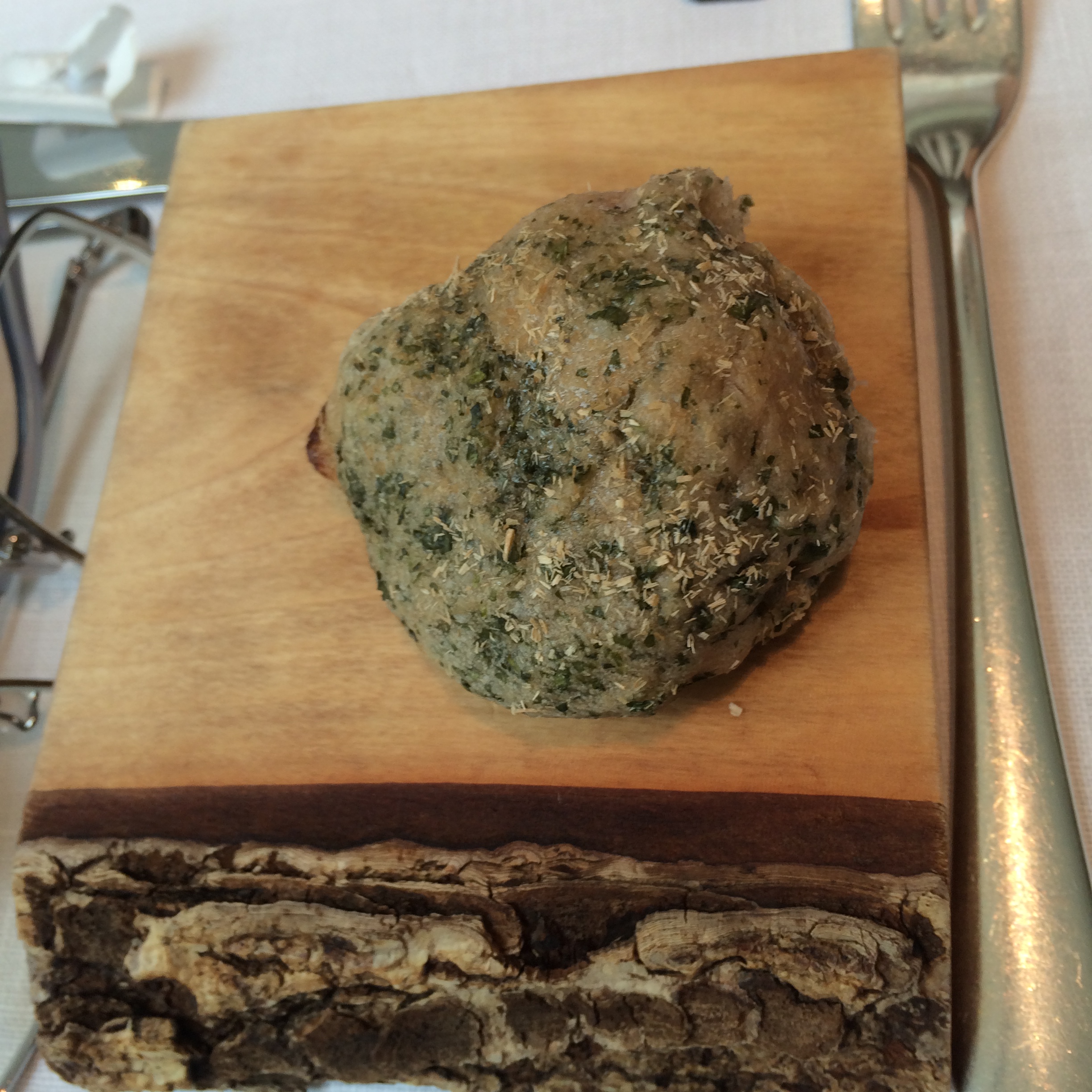The city that was once bursting with modernity is what made Japan the superpower it is today. With the Meiji restoration in 1868, the city renamed from Edo, became the capital of Japan, taking the place of antiquated Kyoto. The city even in the late 1800’s was just home to a strip of government buildings. Of course, this would become one of the largest metropolii in the world. The city, however, has arguably seen the best of its days. Japan is no longer the unstoppable Asian growth-story; it recently receded to third place in the world’s biggest economies. As such, you might be surprised to find a somewhat tired city, still bursting in lights at night, but a bit old and dilapidated at the seams. In short, it’s the Paris of Asia but you will have to do some work to find the right places to go.
View from Skytree
Tokyo is huge. There is no one scene for shopping, nightlife or attractions. There are many nodes - and no epicentre. The Ginza area, of course, is home to glitzy shops and Jiro’s famous sushi restaurant. But on the other side of town, Shinjuku, where you will probably be staying, is also filled with malls, restaurants, skyscrapers and distractions of every magnitude. Then there is the student favourite bar-district of Roppongi, and the masses of the Shibuya crossing. Harajuku and the pedestrian alleyway of Takeshita Dori (g: Takeshita Dori) is another district, between Shinjuku and Shibuya that is full of sights and sounds. Go to Akihabara for the nerd culture: electronics, girls dressed in Cosplay, and the titillating girl band AKB48. On the eight floor of the local Don Quijote (Don Quijote Kanda) store is the AKB48 theatre where pimple-infested adolescents wait patiently for entry via lottery. Tokyo is much like Paris. There are many arrondissements, each with its own small twist, all bustling with activity. It is a truly two-dimensional city.
Meiji Shrine
Thankfully, there is a highly effective subway system that links all of these nodes. It is so effective that very few times did I have to transfer trains, or walk more than 10 minutes. Busses are unnecessary. One criticism is the multitude of different companies that operate in the Tokyo area. There are two subway companies, one railway company and a light rail company. The best way to tackle this is to purchase the 1000 yen combined pass that will allow you to go on both subway lines, then buy individual tickets for the JR (above-ground railway) lines and the light rail lines (which you will essentially never use). This combined ticket gains you access to the Toei lines which are necessary to go to mainly of Tokyo’s main attractions. Furthermore the additional cost is more than recouped by the wonderful closing-door tones that you will enjoy on the Toei lines, in particular the first 16 notes of “One Day More” from Les Misérables. Given the Japanese fetish over everything French, it should not be a coincidence.
Sushi Dai
What seems like an unconquerable city, can be done in about two and a half days. For breakfast, go to the Tsukiji Fish Market (g: Tsukiji Market). The line-up is about 2 hours if you arrive at 5am at Sushi Dai, the most famous of the line of sushi parlours in the area. In true Japanese style, the sushi is placed on the sushi counter in front of you as you sit in a narrow pass. The grinning sushi chef mutters the fish names in Japanese, English or Mandarin. “Don’t use the soy sauce,” he says. It’s already marinated, in traditional fashion. Notably, a beautifully marbled slice of fatty tuna, a huge cut of Spanish Mackerel where the ends touch the table, a simple snapper topped with salt and lime juice (2600 JPY - 7 pieces or 4000 JPY - 11 pieces). It is delicious but maybe not worth the wait. If you arrive at 5am, it might make better sense to go to Daiwa-Zushi, which gets a line by 6am. For the late birds, your breakfast will have to be at the many other sushi shops, which I’m sure are almost as good.
Lunch might be had at Aoi Marushin (g: Aoi Marushin), a famed tempura restaurant (2200+ JPY for a set). Nearby is the busy, if touristy, Asakusa market and the Asakusa Kannon Temple (g: Senso-ji). If the day is perfectly clear, consider going to the nearby Skytree (g: Skytree) to see the outline of Mount Fuji. The 2-year-old Skytree is the tallest tower and Japan’s attempt to stay modern in a world that has forgotten about them (~2000 JPY). If the day isn’t clear, just go to the free Tokyo Metropolitan Government Office (g: Tokyo Metropolitan Government Office) in Shinjuku.
Italian Wine Bar, Shimo-Kitazawa
For dinner, consider going to Shimo-Kitazawa, the hippest part of Tokyo. It’s formed of veins of little streets with even smaller restaurants. The hottest spot seems to be Dill Fait Beau (g: Dill Fait Beau), which is a little French restaurant behind a shop. For some curry, go to Pannya Curry house (g: Pannya; ~1000 / curry, no English menu). Finally go to an unnamed Italian Wine Bar (g: 35.6635194, 139.668594) for only the hard-to-find drinking vinegar, a coolly refreshing soda that is more sour than sweet. Its coriander salad is excellent as well. Singles, beware. The area seems to be teeming with couples. For some French food or just drinks, there is natural wine at Shonzui (g: Shonzui, Roppongi; 1200 JPY a glass) with some slices of ham (900 JPY) near the Roppongi area. Otherwise, slurp the best soba noodles in town at Sarashina Horii (g: Sarashina Horii; ~900 JPY for noodles) near Roppongi. Also, the teriyaki chicken, which tastes nothing like teriyaki as you or I know it, is not to be missed (600 JPY for chicken). That dish singlehandedly brought back growing up in the suburbs of Tokyo.
Sarashina Horii
Now, for some star-gazing, Tokyo has the most Michelin stars in the world - more than Paris. Yes, the standards are lower but Tokyo is still foodie-central. At Ishikawa (g: Ishikawa restaurant), keep in the 3-star region, master chef Ishikawa serves but four tables. The lengthy 10 or so course is in traditional Kaiseki fashion, beginning with cold dishes, some raw food, then mains, rice and dessert. The start is stellar. First, we see a cold, oily Sea Bream topped with a sour milt, all in a clam-like bowl. Then a few lightly deep-fried fish - head and tail - that is crunchy and bitter, accentuated by a sweet jelly sauce. Then a high-grade Waygu, perfectly pink, sitting on bamboo so that it rests outside of the clear broth. It seems like a way to ruin a good piece of beef - by putting it in soup. Instead, the beef retains its juicy flavour. The salmon sashimi, mainstream in North America, is so soft and fresh. The crab sashimi dish (from Hokkaido) is too mushy and mixed-up that it fails to be fine. The fish is explosive in soy flavour, with a nice crunchy skin against a crunchy sautéed Japanese cabbage. Unfortunately, the abalone and unagi, both in broth, fails to be interesting, though some of my disdain might be a personal agenda against watery mains. Furthermore, the unagi had quite a few bones still in it. But Ishikawa (who just came out to serve the rice) redeems himself with the dessert - a grapefruit dish sitting in coconut milk. It ends looking a bit like the meal started - orange condiments on white. The taste is completely different. Two grades of grapefruit - one soft yellow and another blushing pink, has the citrusy kick whereas the thick coconut milk gives the dish body. It is an unbelievable end to the meal.
Ishikawa. 3 stars. 20000 JPY dinner. Top 100 restaurants in the world.
Appetizer. Sea Bream Milt, ‘Udo’ Mountain Vegetables, Daylily Leaf and Grilled Shiitake Mushroom with Grated White Radish
Deep-fried. Baby Ayu Fish with Minced Japanese Pepper Bud
Soup. Bamboo Shoot from Kyoto and Wagyu Confit
Sashimi. Cherry Salmon Garnished with Fresh Seaweed and Japanese Herbs
Horsehair Crab Topped with Crab Innards
Charcoal-grilled. Cutlass Fish and Spring Cabbage
Delicacy. Steamed Abalone and Turnip with a hint of Ginger
Hot Pot. Unagi Eel, Tofu and Seasonal Vegetables
Steamed Rice. Steamed Rice with Black Rock Fish and Fresh Ginger. Miso Soup and Pickled Vegetables
Dessert. Fresh Grape Fruits, Grapefruit Mousse. Crushed Rum Jelly and Coconut Milk
Google seems to think Les Creations de Narisawa (g: Les Creations de Narisawa) place is “permanently closed.” Quite the opposite. It’s thriving. Although it was recently bumped from first in Asia, it is still the place to be in Tokyo. Unlike the other culinary stars in the region, it is deeply rooted in the French style, though many of the ingredients and influences are no doubt Japanese. The dining room is strictly modern, with an open kitchen from which the well-built chef makes a few appearances. As soon as you enter, you notice a candle-looking contraption that holds what first appears to be a pate. Then you notice that the pate is actually growing. It isn’t until the first course arrives - some deep-fried Chiayu sweet fish, water soaked in cedar and some deep-fried burdock and wasabi leaves on fermented soy bean yogurt, and a bucolic arrangement of crunchy green crumbs - that the pate is actually revealed to be sourdough in the fermenting process. A blazing clay pot is fetched, some chestnut tee powder is added, and the “Bread of the Forest 2010” is cooking.
A pamphlet explains the concept - that “humans once lived in the forest” but have recently destroyed it. Therefore, the ingredients of the impending 10-course meal are all said to be sourced from the forest as well as the animals that feed on the forest. This theme is stereotypically Japanese (think Princess Mononoke) so the ideas are not exactly original. However, the execution is. The bread is just about finished cooking when a butter covered with herbs arrives, disguised to look like moss on a tree. The fresh bread is delicious - soft, creamy, with a hint of grapefruit. Then, a lightly seared sea mackerel is lovingly covered with japans herbs and colourful flowers, as an anchovy and garlic paste round out the dish. Together, it represents the “mountain and sea”. Then in a twist of cool, a white bowl from which a mystical white smoke arises is brought to the table-front. Of course the 2nd best restaurant in Asia would use liquid nitrogen. But the powder that rests in it looks exactly like ash, and disintegrates on contact with water. After all the show, which resembles a beautiful landscape of the seashore near a volcano site, is a perfectly cooked squid loaded with paprika flavours, neutralized by lemon and olive oil.
At this point, you notice that only half of the meal has been served yet you will never look at food the same way again. The next few dishes lose the pazazz and focuses just on flavour. There is a in-shell langoustine under flower pedals, a steamy white asparagus under seaweed and clams, a perfectly tender porchetta - cooked on and off every 3 to 5 minutes in an onion sauce with Japanese root vegetables, and a crispy-skinned Alfonsino with green asparagus, potato and a caper sauce. The only criticism on these dishes is that they come out too slowly. The entire affair takes about three hours so kiss your afternoon in Tokyo goodbye. Of course, the wait is worth it, if only for the signature dish - “Sumi 2009” Omi beef: a “Waygu rump roast marinated in leek, basted in olive oils and then carbonized on the outside”. The beef is first brought out on a steel grate to look like a chunk of charcoal (“Sumi” is Japanese for charcoal). The effect is achieved by the arosé style, a French method that cooks via basting. It keeps the centre perfectly pink. The black powder rubs off and makes for an adventurous meal, especially in a red wine reduction that brings out the sweet meat.
Dessert is special too. The first is a play on a salty dog, a British slang term used to describe sailers. It uses domestic Japanese grapefruits. They are of high quality and rare. Then yogurt ice cream, amaze sorbet (non alcoholic sake), mugwort mochi and strawberry sauce. I found the strawberry sauce to be a little overpowering and there was nothing too differentiated about this part of the meal. However, Narisawa would not leave us on a down note. Out came the proverbial three-storey cheese trolley, but with desserts of all varieties. In our stupor we got one of everything. There were lines of macarons and tiny French pastries for every sweet tooth. The best ones were the Japanese-influenced ones: a beautiful green tea mochi served in a spoon and a ball of rich, dark chocolate, coated in green tea powder. Needless to say this was a dining experience for the ages. Without a doubt in my mind, Narisawa is the best restaurant I have been to.
Narisawa. 2 stars. 12000 JPY Lunch. 2nd best restaurant in Asia / top 10 in the world
Spring Collection, 2014
Evolve with the Forest
“Bread of the Forest 2010”
Essense of the forest and Satoyama scenery
Chiayu, Sweet fish
Spring mountain and sea
“Ash 2009” Scene of the seashore
Langoustine. Garden
White asparagus. Clam
Kashu pork. Udo. Fuku.
Alfonsino. Green asparagus. Potato
“Sumi 2009” Omi beef
Salty Dog
Strawberry. Amazake. Mugwort
To transcend the distant cultures, it helps to show you adopt Japanese culture. Talking about pokémon and Naruto, unfortunately, will fall on deaf ears, especially if you talk about it in English. Instead, buy a Totoro money purse (~900 JPY) to hold all little coins (from 1 JPY to 500 JPY) you will have to lug a round. Then take it out in front of any Japanese person you have to interact with and they will immediately respond “Totoro!”. But your interest in Miyazaki films should not end at cultural bridging. There is a popular Ghibli museum (g: Ghibli museum) about an hour out of town. Unfortunately, it was closed when I was there (as was the Nezu museum, as was Mori Art Museum - i.e. the art scene seemed to shut down for my impending arrival).
If sumo wrestling is in session, consider getting day-of tickets for only 2200 JPY and watch jiggly sumo wrestlers have a bout with each other. The fat ones are particularly fun to watch, but you also see a rarer sight of skinny wrestlers try to unseat each other. The best wrestling starts in the afternoon but events occur for the entire day. Ticket sales start at 8am. The defeated ones leave by subway just as you might. It all feels very real. Right beside the sumo stadium off the Rygoku stadium (g: Ryogoku Kokugikan) is the essential Edo museum (Edo-Tokyo museum). It gives an excellent lesson of the history of Tokyo.
This city of comprehensible culture, from a country with unparalleled honour and self-respect, is certainly worth exploring. It has many Western qualities, not to mention some Western-influenced food. But it has a culture very few Westerners can even begin to understand. Such a mixture of East and West is rare, present historically only in geographic centres like Anatolia. But Tokyo also receives this honour, the product of globalization and post-war assimilation. And although its days of glory may be numbered, at least in its former glory, it will continue to confound and bewitch visitors for many more years.
Accessibility: The only sufficient language in Japan is Japanese, though English is prevalent in some areas. Generally, the Romanization of the Japanese writing system (which is composed of Japanese alphabet and Chinese lettering) is sufficient for Google Maps. At times, the actual Japanese must be used, which is indicated in this blog’s Google guides. This Romanization is also used significantly on signs, especially in public transportation. English is not a useful language so access to Google translate is essential. Sim cards can be purchased at select airports. More likely, you will rent a “wifi hotspot device” for about 900 JPY a day at the airport. Taxis are expensive.





